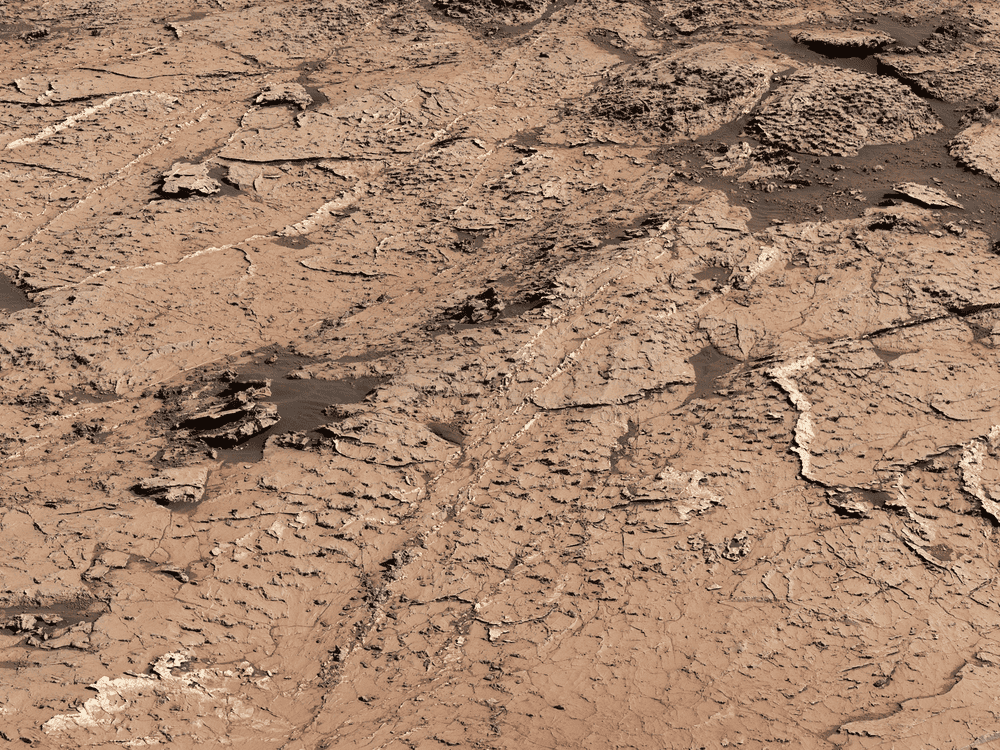Mars may be exceptionally dry now, but that wasn’t always the case. More and more, researchers are finding evidence that Mars had a complex hydrological cycle that resembled what we see on Earth today.
Now, the Curiosity Rover has discovered hexagonal patterns in ancient mud on Mars. Taken together with what we know about Mars’ geology and past, this hints at a cyclical period that had wet and dry seasons. Overall, it makes it even more likely that Mars could have hosted life.

Cracks in mud are so common on Earth that we don’t pay them much thought. But on Mars, they’re very exciting.
When wet mud dries out, the water between the mud particles evaporates. This causes the mud particles to come closer together, and the mud beings to contract. As this happens several times, this contraction causes stress — and in time, this stress can lead to cracks. Most often, this type of cracks is hexagonal. So if you see hexagonal types of cracks in mud, you can link them to a wet-dry cycle.
That’s exactly what the new observations have done.
Hydrological history
New mud crack observations by the Curiosity rover show wet-dry cycling occurred frequently in early Martian surface environments. Judging by the geometry of this cracks, the Red Planet may have once experienced seasonal weather patterns or even flash floods. The research, published in Nature, adds another puzzle piece to the watery history of Mars.
“These exciting observations of mature mud cracks are allowing us to fill in some of the missing history of water on Mars,” said Nina Lanza, principal investigator of the ChemCam instrument onboard the Curiosity Rover. “How did Mars go from a warm, wet planet to the cold, dry place we know today? These mud cracks show us that transitional time, when liquid water was less abundant but still active on the Martian surface.”
Coauthor Patrick Gasda from the Los Alamos National Laboratory’s Space Remote Sensing and Data Science also emphasized this point.
“A major focus of the Curiosity mission, and one of the main reasons for selecting Gale Crater, is to understand the transition of a ‘warm and wet’ ancient Mars to a ‘cold and dry’ Mars we see today,” Gasda said.
Flash floods

Additionally, the rover found evidence that the mud cracks were only a few centimeters deep, which could mean that wet-dry cycles were seasonal or may have even occurred more quickly, such as in a flash flood.
“What’s important about this phenomenon is that it’s the perfect place for the formation of polymeric molecules required for life, including proteins and RNA, if the right organic molecules were present at this location,” Gasda said “Wet periods bring molecules together while dry periods drive reactions to form polymers. When these processes occur repeatedly at the same location, the chance increases that more complex molecules formed there.”
Gasda’s assertion about these mud cracks’ potential role in forming organic molecules and life lends a layer of complexity to these mud-crack features. The cyclic wet and dry conditions might have provided an environment favorable to creating intricate molecules essential for life.
“These features point to the existence of wet-dry environments that on Earth are extremely conducive to the development of organic molecules and potentially life,” Lanza said. “Taken as a whole, these results are giving us a clearer picture of Mars as a habitable world.”
This isn’t the first time researchers have found clues of flooding on Mars. Most deltas on Mars were likely created by short, catastrophic floods, and megafloods may have not been that rare on Mars. As our understanding of our planetary neighbor improves, Mars is looking more and more like an interesting planet.






